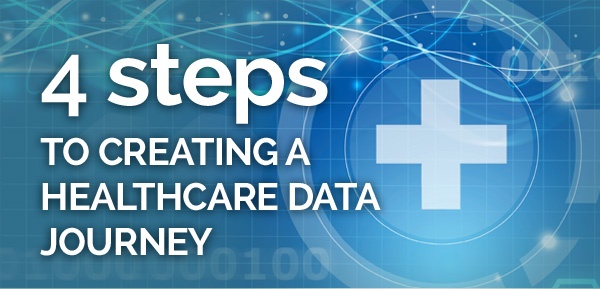Push for Progress: Create a Healthcare Data Journey in 4 Steps
by Core Solutions on March 21, 2016

Healthcare is the most data intensive business in the economy, but is also the industry that uses its information the least.
This phenomenon, as set forth by David Cutler, Harvard Kennedy School economics professor, sheds light on how healthcare data complexities are stifling data sharing, utility and ultimately, progress. While health and human service organizations spend a lot of time with industry- and enterprise-wide data, much of the time allotted is dedicated to electronic health records (EHRs) and telehealth integration and management, rather than expending actionable data. Consider the unique data challenges of the health and human service field and how creating a data journey will help turn that data into knowledge.
Unique Healthcare Data Complexities
The primary data challenges for health and human service organizations stem from information overload bound by stringent requirements for management and reporting. Furthermore, the industry does not operate on standardized data models, but instead varying EHRs, making data sharing difficult. As such, additional healthcare data complexities include:
- Much of the data are in multiple places
- Data are structured and unstructured
- Lack of universal definitions
- The data is complex, not linear
- Regulatory differences and changes
Despite these challenges however, data has helped springboard changes in healthcare by way of identifying and treating high-cost consumers, reducing admissions and enhancing care provider effectiveness. To further turn this data into knowledge, health and human service organizations must create a “data journey” – moving from simple data modeling, to big data for analytics.
Creating a Data Journey in 4 Steps
- Data Modeling – Designed to represent reality and ensure exact communication, this step is accomplished by organizing data elements, including people, places, things and standardizing how they relate to one another. Healthcare organizations achieve this by deciding which data to track, report upon and base decisions off of.
- Data Maturity – Helping organizations identify and quantify how sophisticated their data modeling is, data maturity is a four step framework that includes undisciplined, reactive, proactive and governed. View an infographic on this step for more detail here.
- Data-Driven Decisions – Data-driven decision management (DDDM) is a business governance approach that values decisions that can be backed up with verified data. This approach begets key questions such as: how well do the sample data represent the population; does the data distribution include outliers, etc.
- Big Data – Lastly, big data can be analyzed for insights that lead to better decisions and strategic business moves. It is often derived from structured and unstructured data that measures volume, variety, velocity, variability, and veracity.
- April 2024 (3)
- March 2024 (4)
- February 2024 (1)
- October 2023 (3)
- September 2023 (3)
- August 2023 (2)
- June 2023 (2)
- May 2023 (3)
- April 2023 (4)
- March 2023 (2)
- November 2022 (3)
- October 2022 (1)
- September 2022 (1)
- August 2022 (3)
- July 2022 (1)
- June 2022 (1)
- January 2022 (2)
- December 2021 (1)
- October 2021 (2)
- September 2021 (2)
- August 2021 (2)
- July 2021 (5)
- June 2021 (5)
- March 2021 (2)
- January 2020 (3)
- November 2019 (3)
- October 2019 (2)
- July 2019 (1)
- June 2019 (1)
- May 2019 (1)
- April 2019 (3)
- October 2018 (1)
- September 2018 (1)
- August 2018 (1)
- July 2018 (1)
- June 2018 (1)
- May 2018 (2)
- April 2018 (1)
- March 2018 (1)
- December 2017 (1)
- October 2017 (2)
- September 2017 (1)
- June 2017 (2)
- May 2017 (2)
- April 2017 (1)
- February 2017 (2)
- January 2017 (3)
- November 2016 (2)
- October 2016 (3)
- September 2016 (2)
- August 2016 (1)
- July 2016 (2)
- June 2016 (1)
- May 2016 (3)
- April 2016 (2)
- March 2016 (2)
- February 2016 (2)
- January 2016 (3)
- December 2015 (2)
- November 2015 (4)
- October 2015 (3)
- September 2015 (4)
- August 2015 (1)


Let us know what you think